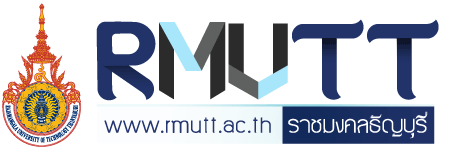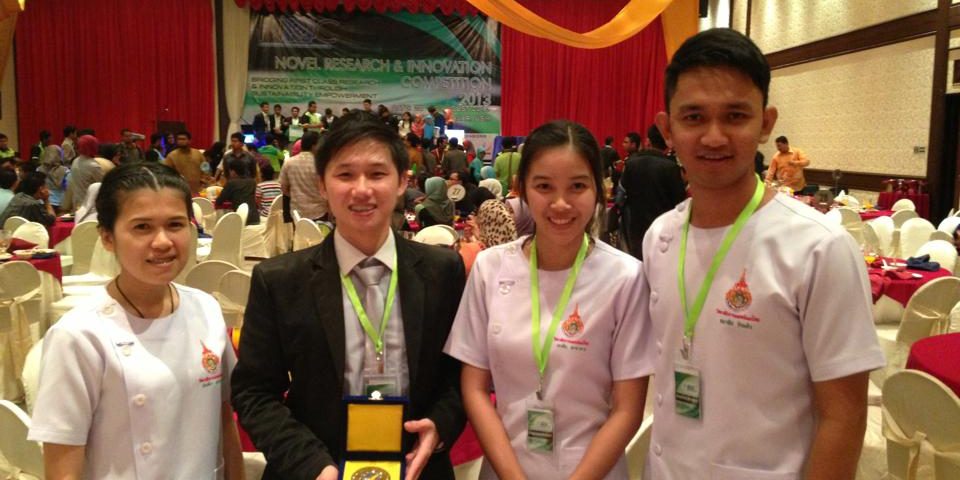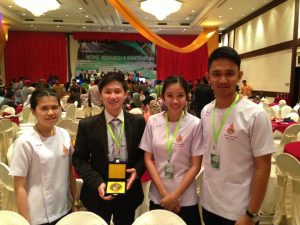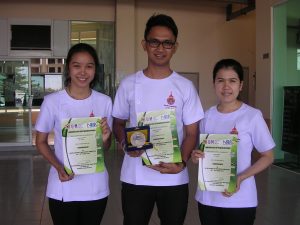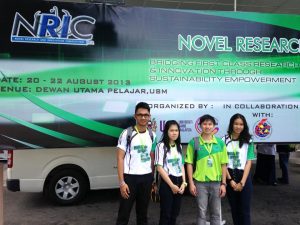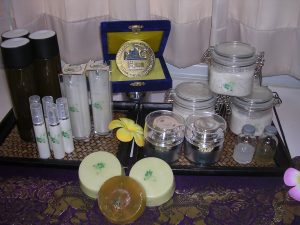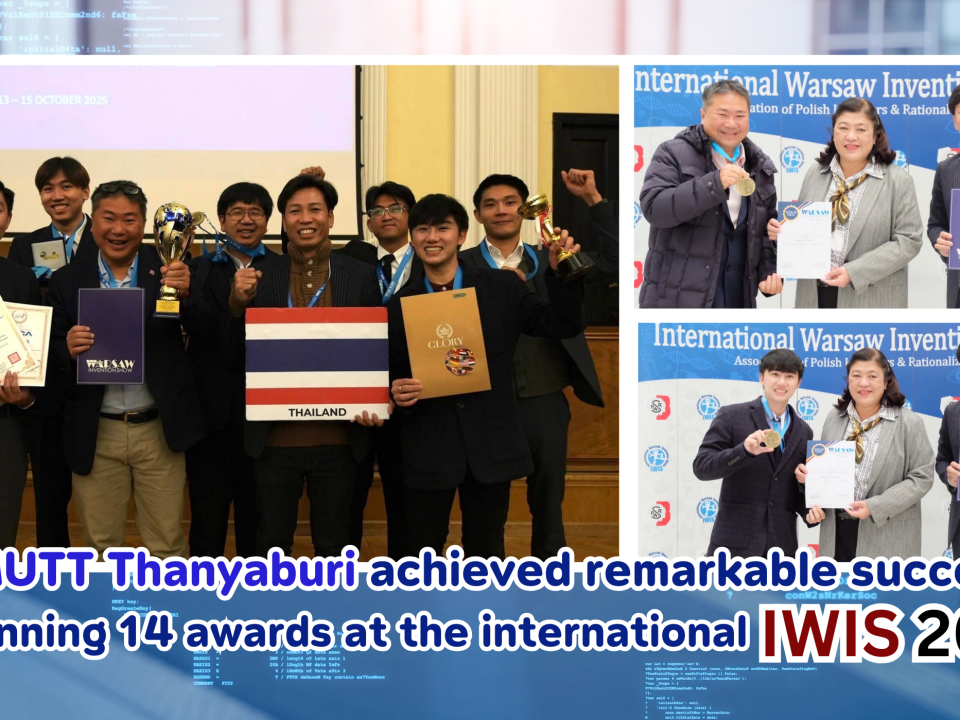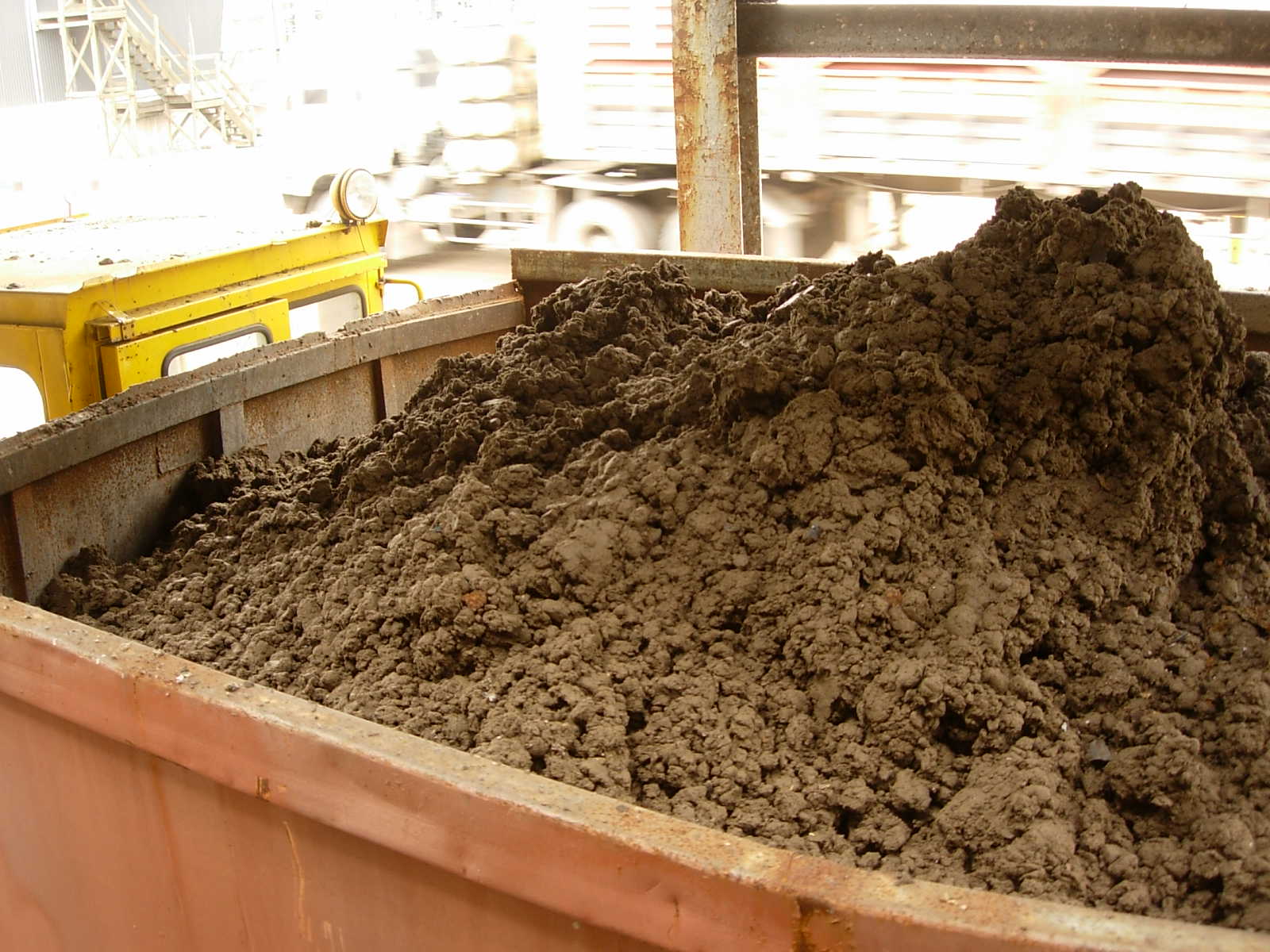
Light-weight Pulp Concrete Blocks: New Construction Material
14/10/2013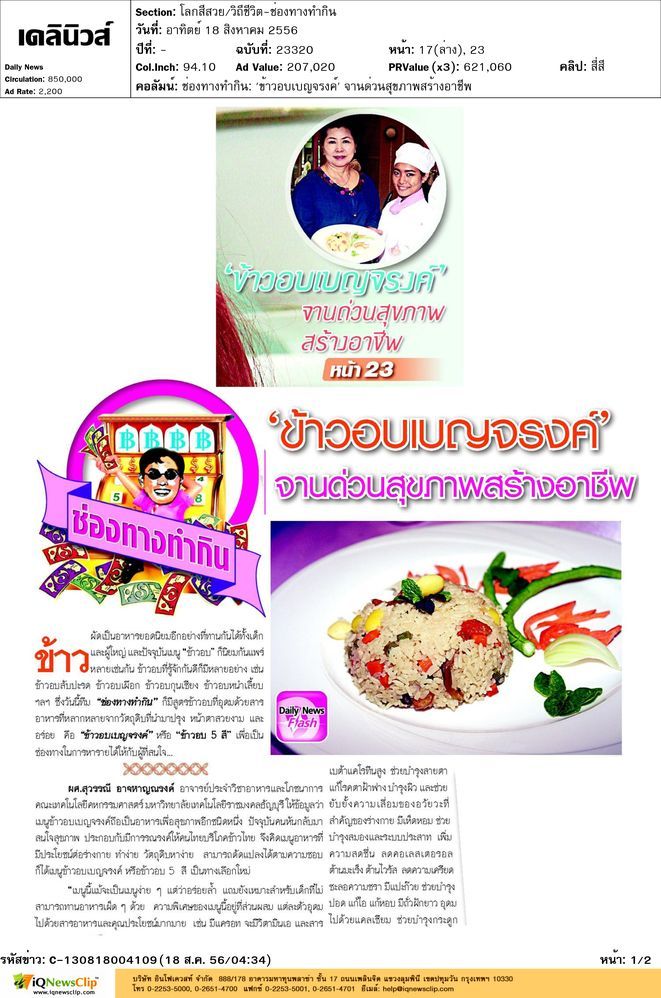
Health Cuisine: Claypot Benjarong Fried Rice
14/10/2013A team of third-year students from Rajamangala University of Technology Thanyaburi’s Thai Traditional Medicine College bagged the second prize in the health and medical science category, at the recent Novel Research and Innovation Competition 2013, held in Penang, Malaysia. Their research study, entitled “A novel whitening active ingredient from the extract of Hyposix aurea Lour Extracts entrapped in niosomes”, focused on the use of an herbal extract to replace comm only seen active ingredients in skin whitening products such as AHA or BHA.
“Most of the whitening products we see in the market today use either AHA or BHA, which are naturally derived compounds that can cause skin allergies, swelling, or blemishes when used over a long period of time. Another commonly seen ingredient is arbutin, which is extracted from plants and is effective in inhibiting the production of melanin but is also costly. Vitamin C is also found in skin care products, but because it dissolves easily, it is less effective than other ingredients,” said a team member.
After studying the disadvantages of using chemical compounds in skin care products, the team decided to search for a replacement ingredient and found that Hyposix aurea Lour, a local herb which has traditionally been used to treat acne and skin blemishes, could be developed into high-quality whitening products.
“During the first phrase of the study, we tested the biological properties of the plant’s roots and leaves, and their effectiveness in treating skin blemishes and scars. Results from cell cultures confirmed that the anti-melanogenesis property in this plant’s extract was more effective than vitamin C in treating blemishes. In addition, the extract is a natural antioxidant as well as is non-toxic when tested on a skin cell in a culture dish,” said the team member. This study has been presented in an academic conference and is being edited for publication in an international journal. The team is also applying for a patent on their study.
The second phase involved the entrapment of the plant’s extract in niosomes, in order to enhance its anti-melanogenesis property. The entrapped extract was then used as an ingredient in a range of whitening products, including cream, lotion, gel, soap, scrubs, and serum, which are now being tested for skin allergies in a sample group of volunteers.
This study is an example of knowledge building, by combining local wisdom and scientific research methods, for the purpose of supporting a sustainable community and creative economy. Hyposix aurea Lour is a local plant that is widely available and has natural whitening properties that can be harnessed and turned into high-quality yet affordable skin care products. For more information, contact Dr. Kornwinwit at 088 266 7266.
